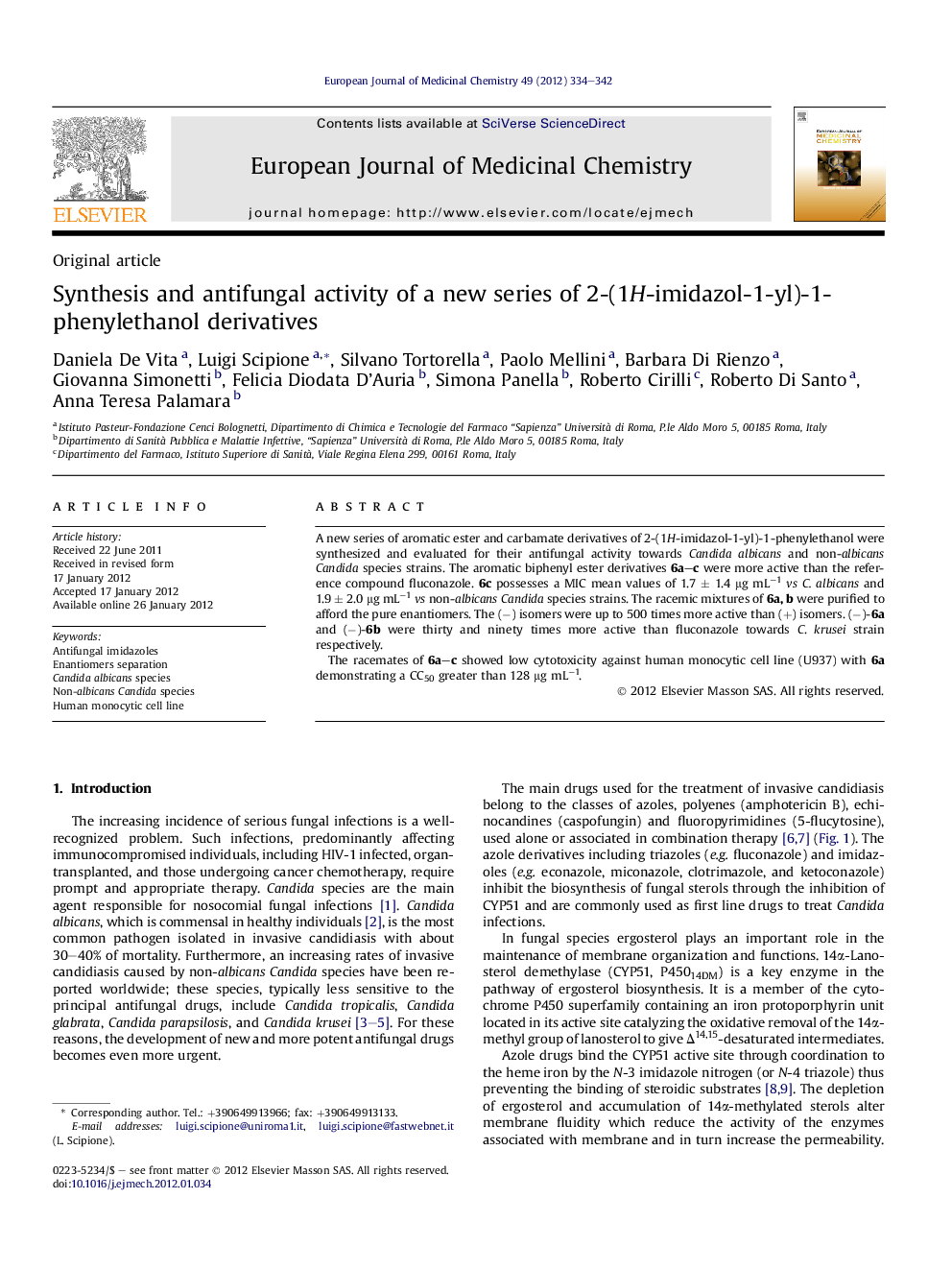| Article ID | Journal | Published Year | Pages | File Type |
|---|---|---|---|---|
| 1393006 | European Journal of Medicinal Chemistry | 2012 | 9 Pages |
A new series of aromatic ester and carbamate derivatives of 2-(1H-imidazol-1-yl)-1-phenylethanol were synthesized and evaluated for their antifungal activity towards Candida albicans and non-albicans Candida species strains. The aromatic biphenyl ester derivatives 6a–c were more active than the reference compound fluconazole. 6c possesses a MIC mean values of 1.7 ± 1.4 μg mL−1vs C. albicans and 1.9 ± 2.0 μg mL−1vs non-albicans Candida species strains. The racemic mixtures of 6a, b were purified to afford the pure enantiomers. The (−) isomers were up to 500 times more active than (+) isomers. (−)-6a and (−)-6b were thirty and ninety times more active than fluconazole towards C. krusei strain respectively.The racemates of 6a–c showed low cytotoxicity against human monocytic cell line (U937) with 6a demonstrating a CC50 greater than 128 μg mL−1.
Graphical abstractBiphenyl esters of 2-(1H-imidazol-1-yl)-1-phenylethanols have been synthesized; separated levorotatory enantiomers were shown to be more active than fluconazole towards Candida albicans and non-albicans Candida species strains .Figure optionsDownload full-size imageDownload as PowerPoint slideHighlights► Synthesis and antifungal activity of new azole derivatives. ► Levorotatory enantiomers showed high activity vs Candida species. ► Low toxicity was observed against cultured human cells (U937).
